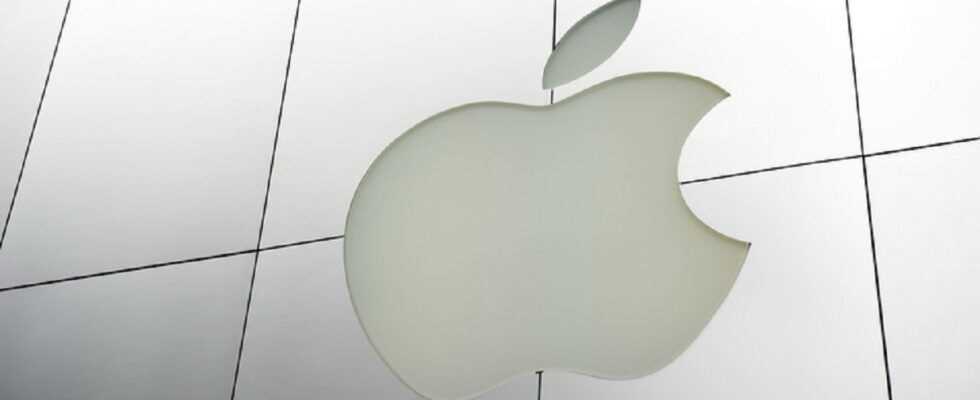Smartphones have become boring.
Over the years, I’ve had the privilege of testing hundreds of smartphones made by countless companies, and I can’t remember a time when I felt as apathetic about smartphones as I do today. More precisely, towards the design of modern smartphones.
It doesn’t matter if it’s a phone made by Google, Apple, Samsung, Motorola or OnePlus. They all look alike. These are rectangular glass slabs with camera dents on the back.
In fact, I cannot say that I am totally disinterested in modern smartphones. There’s plenty of fancy tech in devices like the iPhone 13 Pro and Pixel 6 Pro – which are two of my favorite phones released in 2021.
But there is one area that still catches my design attention. I’m talking about phones with a foldable screen or, at the very least, a foldable design. I had the pleasure of using it over the last few months of 2021, and it’s clear to me by now that foldable phones will play a major role.
Apart from a few rumors, there is no indication that Apple intends to release its own foldable phone in the near future. And that’s a shame, because foldable phones are something Apple should definitely be working on. Here’s why.
The obvious – a bigger screen is much better
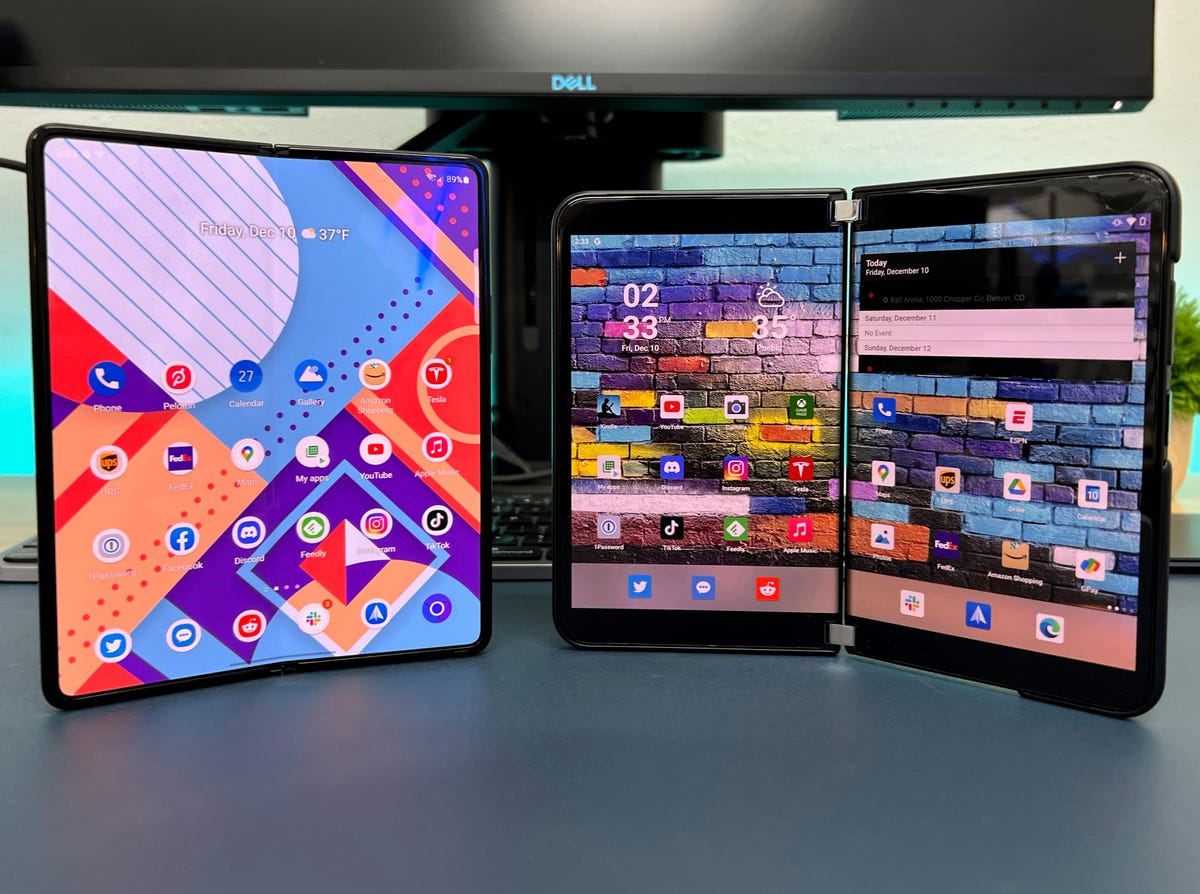
Left: Samsung Galaxy Z Fold 3 Right: Microsoft Duo 2 Jason Cipriani / ZDNet
The popularity of phablets has made it clear that phone owners like to use devices with larger screens. Even as smartphones keep growing in size, I think we are starting to hit the limit of what people are willing to carry.
It’s anecdotal, but personally I can’t see myself carrying a phone larger than the Pixel 6 Pro or the iPhone 13 Pro Max.
So what do you do when customers have shown a strong interest in devices with larger screens? You fold the screen in half, of course. It’s crazy that I’m even able to write this sentence and take it seriously, but thanks to Samsung’s drive to develop and manufacture foldable phones and customers willing to effectively be beta testers of said technology. , the technology has come of age.
A foldable phone is effectively two devices in one, lending itself to be used as a familiar full-size device or as a larger tablet-like device.
Multitasking. With a larger screen, it’s easier to do multiple things at once.
A larger screen provides a more immersive experience when scrolling through your TikTok or Twitter feed, but it also allows multitasking much faster and more intuitive than a standard phone. It thus becomes possible to have two applications open, one on each screen, and to switch from one to the other without hesitation or additional work.
I have an example with the interior screen of the Z Fold 3. Samsung allows you to open more than two apps at the same time, but I mostly used two apps side by side. For example, I often have Twitter open on the left side of the screen and the Spark email on the right side. I am able to browse and sort my inbox while keeping up to date with the latest news in my timeline.
Putting aside multitasking for a minute, having a bigger screen to do everyday tasks like surfing the Internet, reading articles or combing through a document. just work better on a bigger screen.
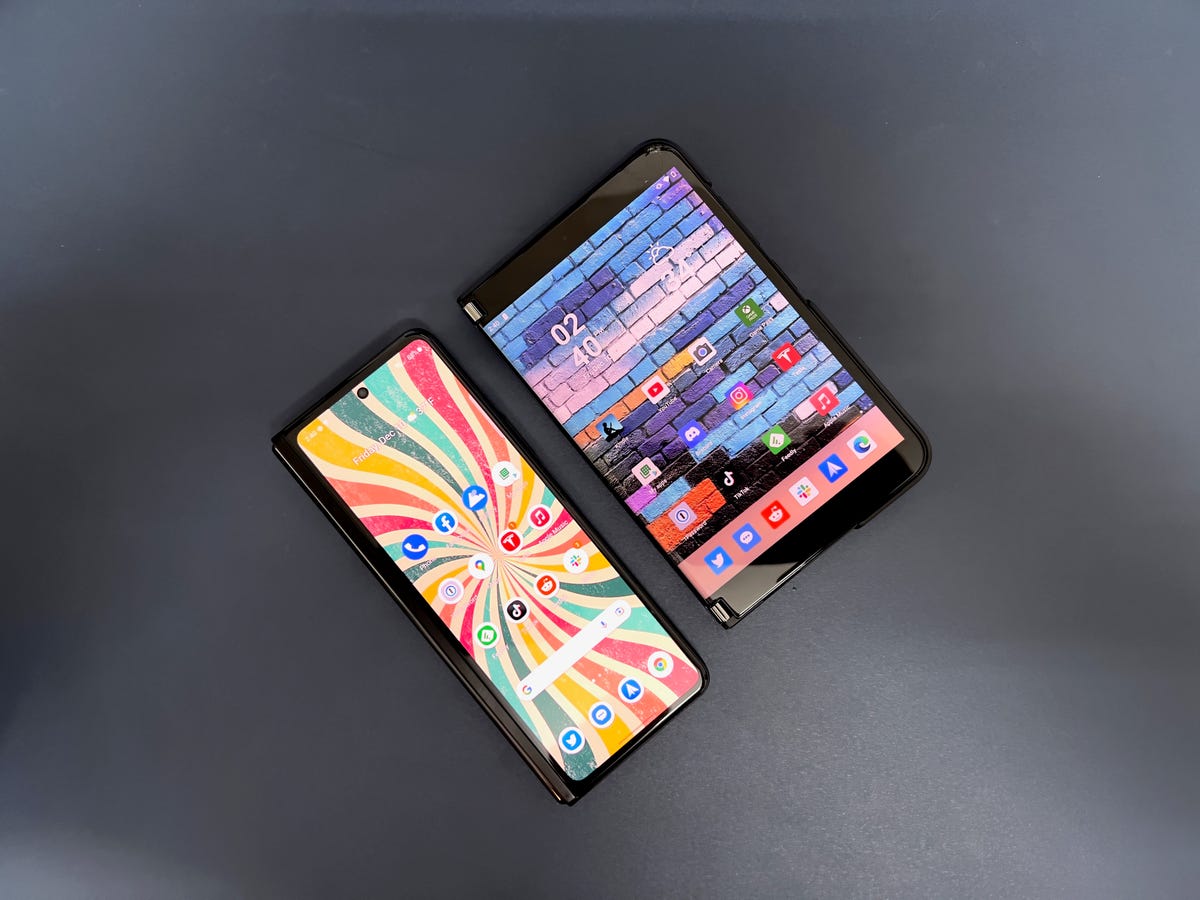
The single screen experience of Z Fold 3 and Duo 2. Jason Cipriani / ZDNet
Choice allows for a better overall experience
I used to view the Z Fold’s design as confusing to the user because it forced owners to decide which display to use and when. I was wrong.
Being able to choose which display to use when you want to use it is a huge selling point that I didn’t understand until I spent a fair amount of time using the Z Fold 3 myself. And by use, I mean more than just browsing a few apps and watching apps in split screen mode. I mean set it up as my primary phone instead of and carry it around instead of my iPhone.
Over time, I have found that the way I use the Z Fold 3 is constantly changing. For example, I started out by using the front screen of the phone for most tasks, only switching to the larger screen for specific tasks like reading a long email.
A month later, I now spend most of my time using the interior screen, relegating the front screen to quickly reading a text message or scrolling through my Feedly account.
Giving users options can be a bad thing if they are not well thought out and implemented, but even the Duo 2 and all of its gesture and multitasking quirks give options to its users, improving the overall user experience that Current smartphone owners are used to it.
What does a foldable iPhone look like?
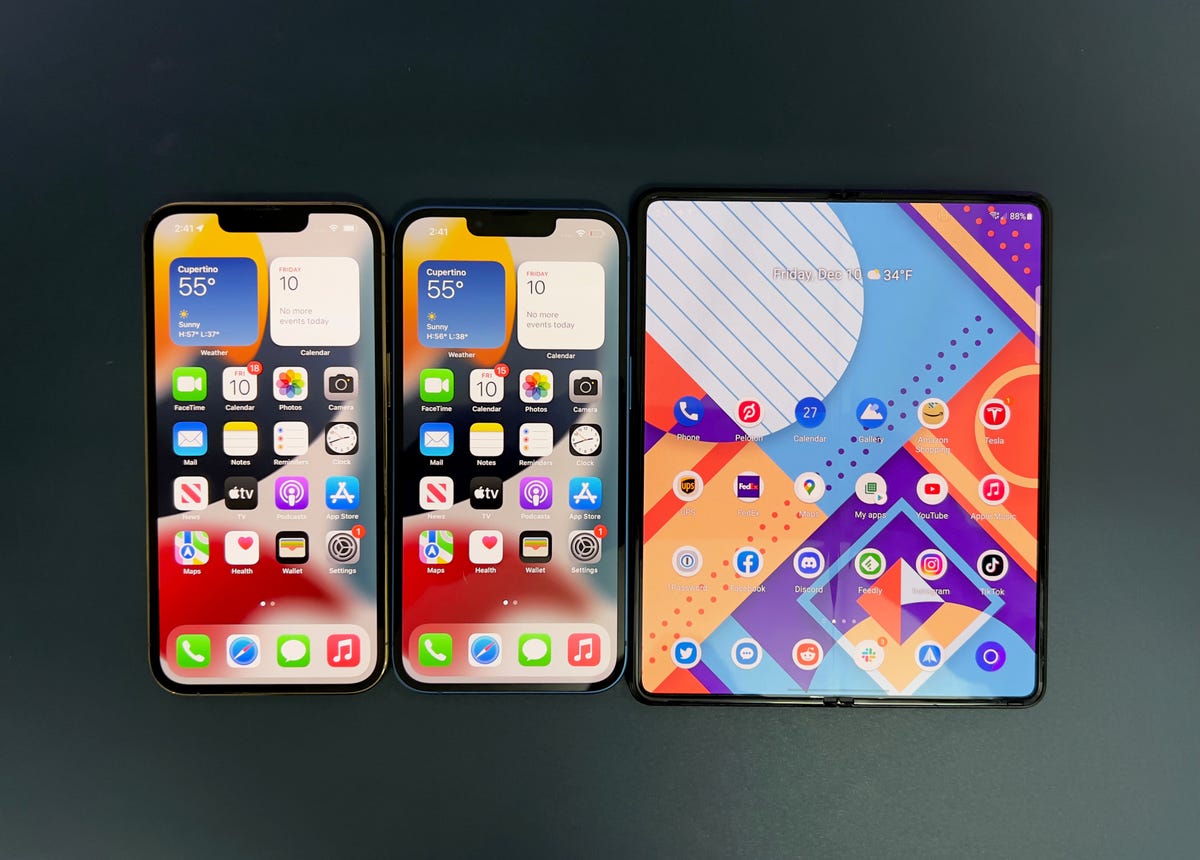
Two iPhone 13 Pros are roughly the same size as the interior screen of Z Fold 3. Jason Cipriani / ZDNet
I have no doubt that a team within Apple is already testing the technology the company would need to make an iPhone with a foldable display. No one knows if this device will ever hit the market, but for the sake of the competition, I at least hope it does. And the sooner the better.
Let me put on my Apple engineering hat and give you what a foldable iPhone would look like.
The front display, and therefore the size of the phone when closed, would be roughly the same size as the iPhone 13 Pro. Unlike the Z Fold 3, which has a much too narrow front screen, I would like the foldable iPhone front screen to have minimal bezels. The downside to the Z Fold 3’s narrow screen is that some apps don’t display properly, with text cut off on the right side of the screen. In addition, the keyboard is far too narrow to comfortably type long messages.
When I place an iPhone 13 and an iPhone 13 Pro (they have the same dimensions and screen size) next to each other, the overall size is slightly larger than the Z Fold 3 when it is open.
I think if Apple were to use the iPhone 13 Pro Max as the basis for the dimensions, the size would be too large for most people to comfortably type and navigate on the interface.
Apple could use Face ID on the front screen to secure the iPhone and enable Apple Pay payments, while also including a Touch ID fingerprint reader in the side button, like the iPad Air and iPad Mini do. currently. The side button could be used to unlock the device when it is open, eliminating the need for a notch on both screens.
Speaking of the iPad Mini, I imagine a foldable iPhone that looks a lot like the smallest tablet in Apple’s lineup, barely smaller.
When it comes to software, most of the basics are already present in iOS and iPadOS. Ideally, a foldable iPhone would work with some sort of hybrid operating system, using iOS on the front display and iPadOS on the internal display.
With iPadOS on the bigger screen, you’ll still have access to the split-screen and swipe multitasking features that iPad users have today.
Of course, the front screen will look and function like the iPhone now. A single column with a single app on screen at all times.
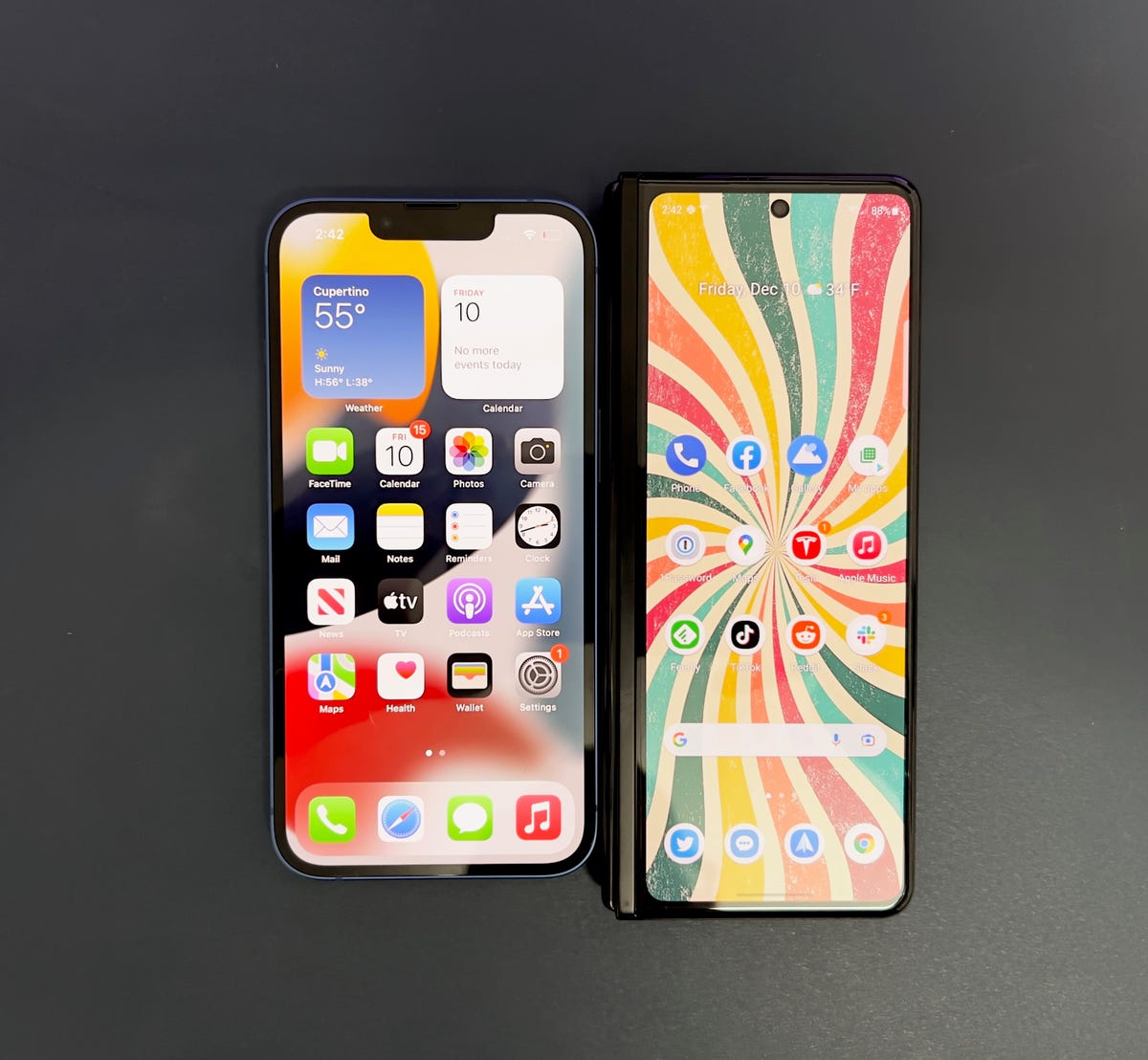
The Z Fold 3’s front screen is way too narrow. Jason Cipriani / ZDNet
It’s hard to imagine a foldable iPhone without Apple Pencil support. But it also means that Apple will have to shrink its Apple Pencil to match the height of the iPhone. This is so that it can be attached to the side and charge wirelessly via magnets, just like the second-generation Apple Pencil currently does.
Much of the groundwork has already been done for Apple’s foldable phone. The question now is whether or not the technology for a foldable display is ready, and whether the battery life can meet Apple’s standards.
I have really enjoyed using the Z Fold 3 and Duo 2 over the past few months. In fact, I enjoyed using the Samsung foldable device so much that I bought one myself.
I still have the Duo 2 sample that Microsoft sent me and plan to come back to it regularly, just to keep the feel of the experience of two separate displays.
Thank you, Microsoft and Samsung, for making me want to get excited about something again. I hope I can say the same about Apple in the near future.
Source: “ZDNet.com”
